The third test flight of the super-heavy launch vehicle Starship (IFT-3 mission) by SpaceX ended with a partial success today (greater than previous ones) - in fact, the team managed to "go further than ever before." The launch was broadcast live on SpaceX's Twitter account.
The third test flight of Starship. How it went
The biggest achievement of this test flight is that the Starship prototype (S28) first reached the desired near-Earth orbit, and then successfully departed from it, although it did not manage to land softly in the ocean. Considering the results of today's test, SpaceX engineers made quite a few modifications to the design ("thousands of changes," if we believe Elon Musk) based on the investigation results of the explosive second attempt IFT-2, when both stages were exploded after separation due to a clogged filter and a liquid oxygen leak. The first attempt of Starship's orbital flight in April 2023, we recall, ended in a controlled explosion after the stages failed to separate.

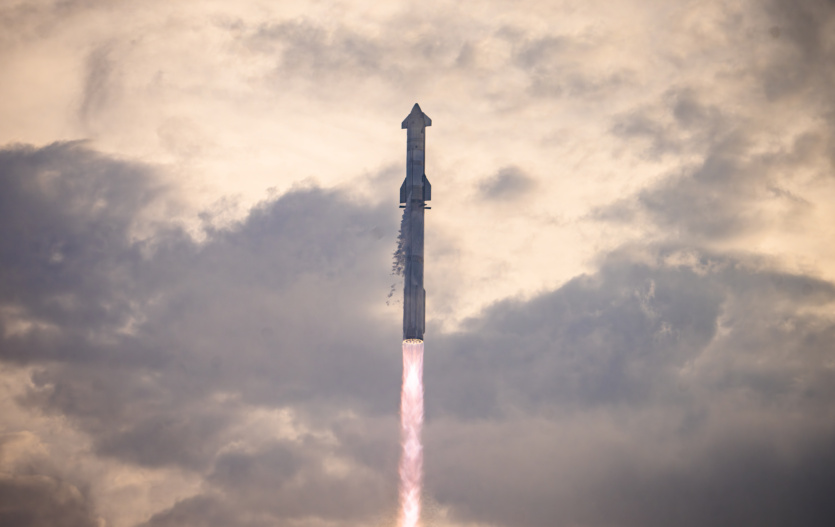
This time, the entire Starship flight lasted about 50 minutes (compared to just over 8 minutes of the previous test). It proceeded according to a slightly updated plan considering the mission objectives.
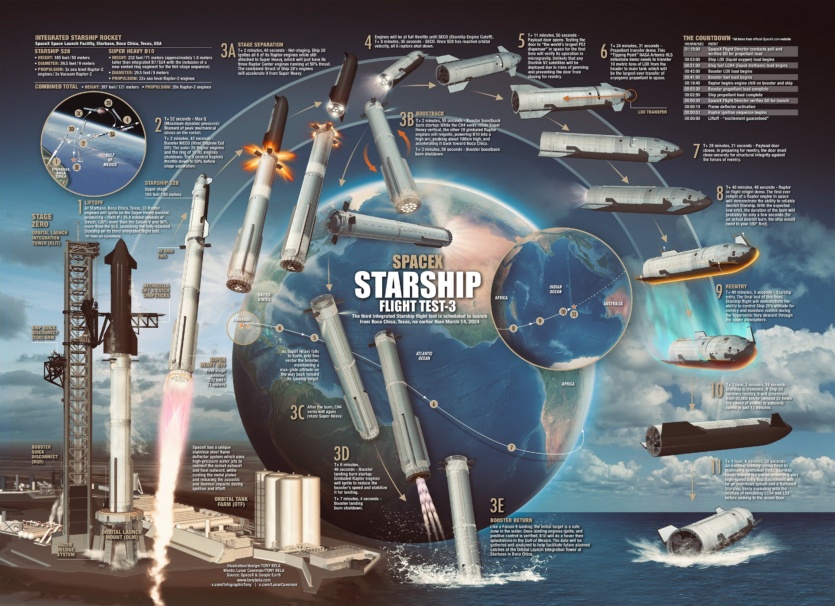

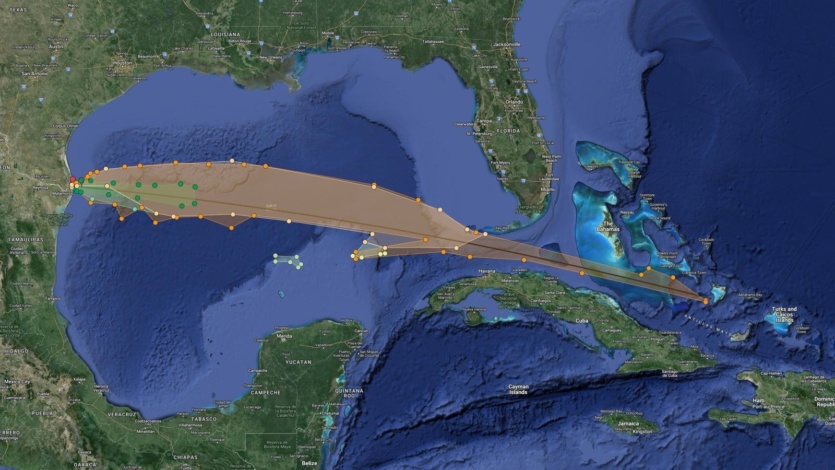
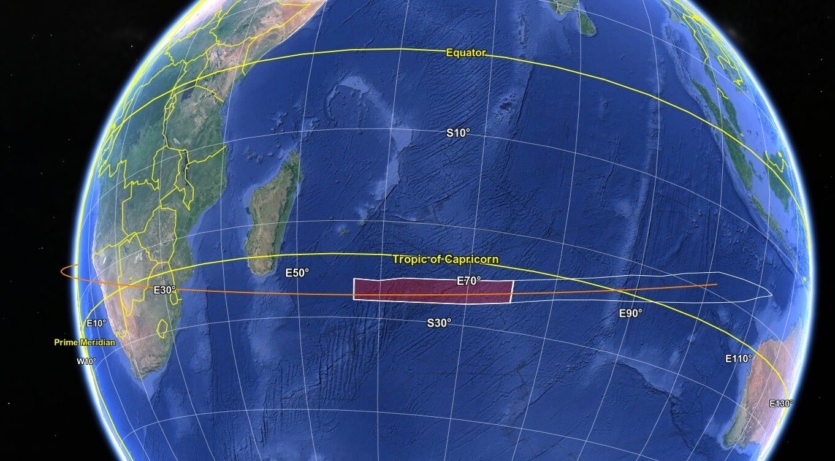
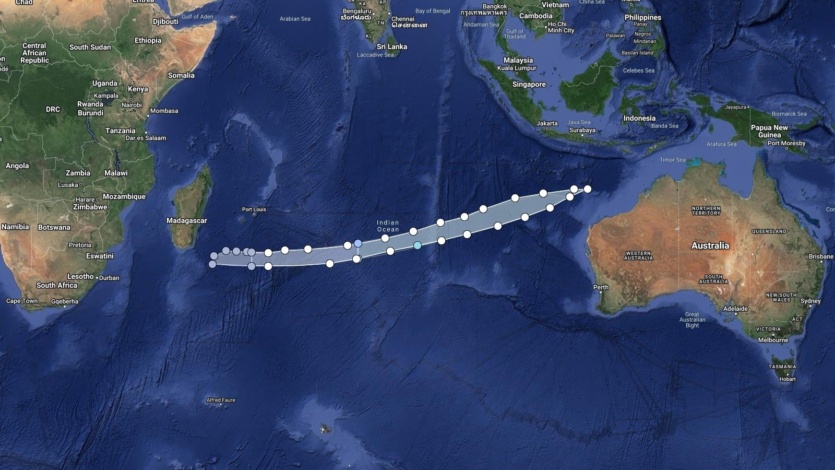
Starship in full configuration with Super Heavy (the total height of the system exceeds 120 meters) launched from the Starbase facility in Boca Chica, Texas, at 15:25 Kiev time on March 14, 2024. By the way, this is the second consecutive successful launch without delays or postponements.
Launch
The first stage worked perfectly until the final landing stage. At approximately 2:49 after liftoff, the super-heavy Starship rocket with all 33 booster engines (all worked the entire time, none failed) reached an altitude of 72 km, where a successful separation occurred via a "hot" scheme: most of the Super Heavy B10 booster engines turned off and the S28 ship engines started simultaneously.
Hot stage separation
This is the second time the Starship team has managed to demonstrate a hot stage separation. The first stage successfully performed the Boostback Burn turning maneuver (similar to how Falcon 9 / Falcon Heavy stages return) and entered the landing trajectory, but in the last meters before landing in the ocean, the team lost communication with the booster. Preliminarily, not all engines worked as planned at this stage, so the booster could not slow down enough for a soft water landing in the Gulf of Mexico.
Drifting in space and door test
As for the Starship spacecraft, after detaching from the booster, it ignited all 6 engines and continued to gain altitude along the planned trajectory - it reached an altitude of about 150 km, successfully entered a near-Earth orbit with an apogee of about 235 km, and turned off the engines. The spacecraft then successfully tested the mechanism of opening and closing the payload bay door (video below) and transferring cryogenic fuel from the small tank to the main one. After that (about 40 minutes after liftoff), the procedure of re-entering the atmosphere began. And that's when problems started: the ignition of the vacuum Raptors, which was supposed to be the first demonstration of their operation, did not occur (the onboard computer somehow failed to execute the command).
Ultimately, Starship re-entered the atmosphere without compromising its integrity, maneuvering solely with side thrusters. In the video broadcast, you can see small fragments detaching from the spacecraft during the entry into the upper layers of the atmosphere. Many heat shield tiles also fell off. At an altitude of about 65 km and a speed of 7.14 km/sec, communication with the spacecraft was lost. Most likely, the autonomous safety system, after detecting deviations from the planned parameters, activated the flight termination system, which destroyed the spacecraft somewhere over the Indian Ocean.
Finally, it is worth noting that during this launch, the SpaceX team also checked the operation of the cameras and stable Starlink communication, giving us many angles and incredibly beautiful shots of Starship. Just a few seconds of video with plasma enveloping the spacecraft during atmospheric entry are worth mentioning.
Return to the atmosphere
What's next
SpaceX has reiterated multiple times that the main goal of this test (as well as any other) is to gather important data for the continuation of development. Therefore, the team will need some time to analyze all the data collected in detail and determine where adjustments are needed to ensure that at least one of the stages makes a soft landing next time. Hopefully, this time the investigation will take less time, and SpaceX will quickly obtain regulator approval for the next test - it has already prepared enough boosters and spacecraft.
Hopefully, at least 6 more flights this year
— Elon Musk (@elonmusk) March 12, 2024
Earlier, SpaceX requested FAA regulator permission for at least 9 Starship test launches by the end of the year. At the same time, responding to space editor Eric Berger, Elon Musk expressed hope for at least 6 more Starship launches this year. Therefore, the launch of Starship V2 is quite possible this year.
Transmission recording
Watch Starship's third flight test → https://t.co/bJFjLCiTbKhttps://t.co/1u46r769Vp
— SpaceX (@SpaceX) March 14, 2024






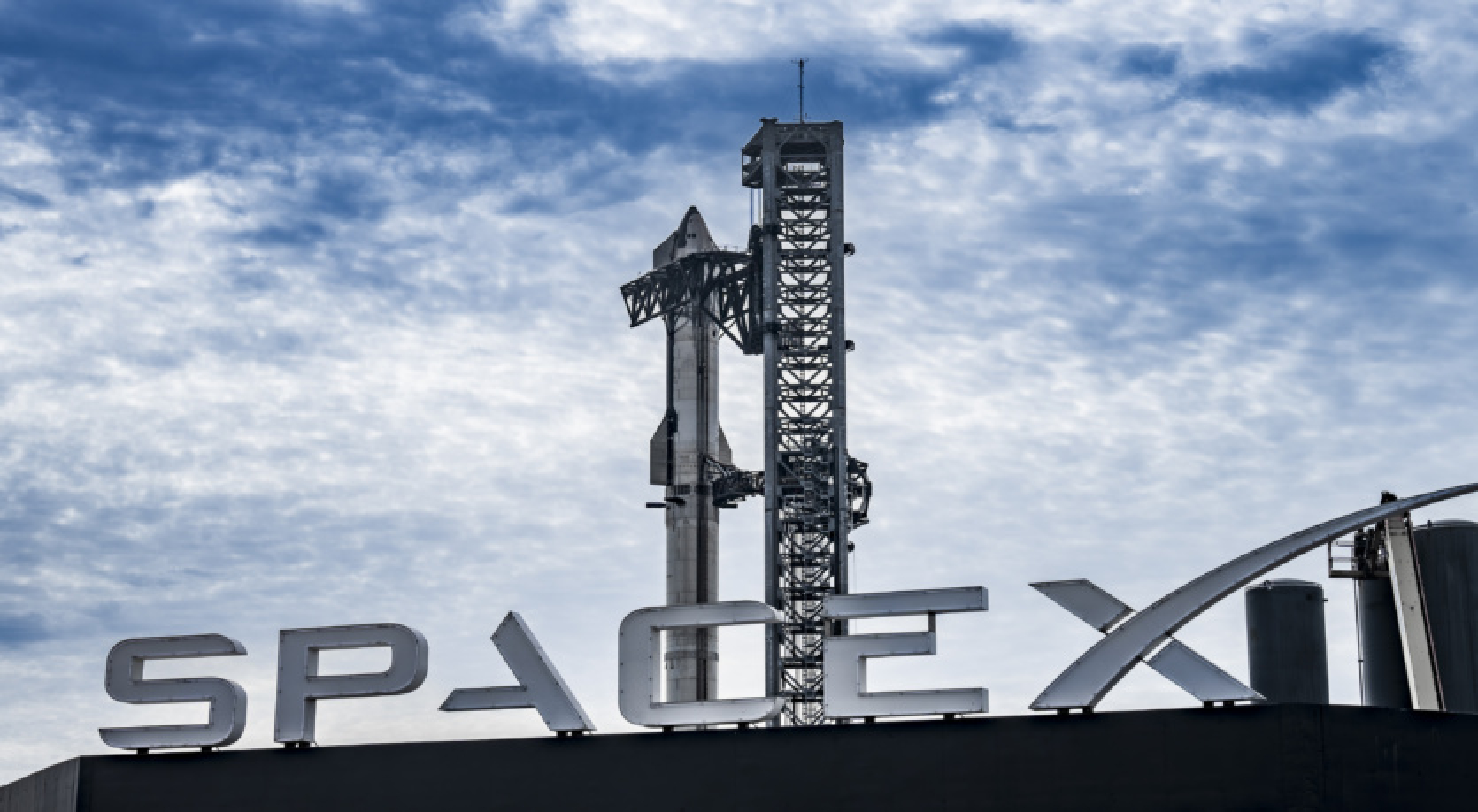



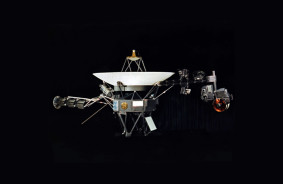



Comments (0)
There are no comments for now